A Complete Guide: E-Scooter Batteries
If you are looking to buy a new electric scooter, you might have a lot going on in your mind. The obvious one is the battery and its relation to the scooter’s performance. In this complete guide to e-scooter batteries, you will get everything you need know about e-scooter battery.
I will clarify the relationship between the specifications of the battery and it relationship tot he scooter’s performance.
Ultimately, a powerful battery translates to more speed, mileage, and convenience. But trying to wrap your head around different types of battery makes, voltage, wattage, and amps can sometimes leave your head in a spin! Worry not, though. In this article, we will unravel everything you need to know about all this and more. Let’s dive in!
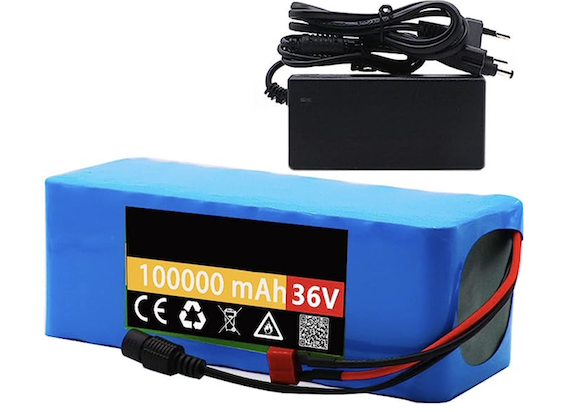
What Do Different Battery Terms Mean?
Before I proceed further, it is important we be on the same page about certain terms on batteries. These are not so foreign concepts as such. But refreshing of mind could be in order, as they are the key metric of performance of batteries and consequently your electric scooter. Let us take a look!
Watt-hours
This metric indicates the amount of electricity used by a device in one hour. In simple terms, 1 watt-hour is the amount of power used in one hour. Consequently, the higher this figure is, the more power the battery can shell out. For example, a 24v/10Ah can store up to 240 Wh of energy, with a range of up to 12 miles.
So much for the watts-hour, amp-hour, and voltage. The key is understanding the role these metrics play in the performance of the battery resulting in a more powerful electric scooter. Now onto the types of batteries.
Understanding the Different Types of Scooter Batteries
As we pointed out above, the battery is critical to your electric scooter’s speed and power. The fact is, all batteries are not equal. Different batteries deliver varied results. We’lll discuss a few below.
Lithium-Ion Batteries
Also known as Li-ion, Lithium Ion batteries are a recent entrant in the market compared to others such as lead acid batteries. Nonetheless, they have taken the market by storm due to their numerous advantages compared to other battery types.
Lithium is an element that releases electrons fast, which explains why they are favorable for making efficient batteries using this technology. In fact, market research shows its demand is projected to skyrocket up to the year 2030 and beyond.
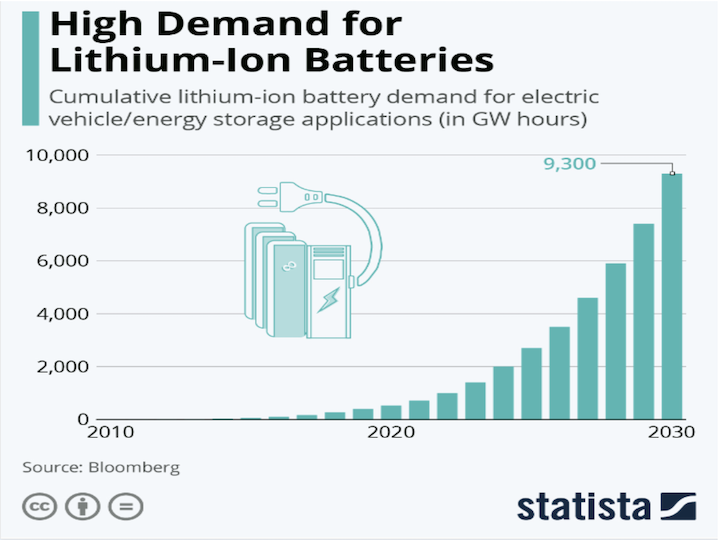
Pros
- They have higher power storage capacity. For example, a typical Li-ion produces 3.7v more electricity compared to 1.25 produced by Lithium-Cadmium of the same size.
- They can withstand continuous charging and discharge without undergoing chemical decaying of the electrodes.
- Unlike other types of batteries, they charge faster. Moreover, it is easier to determine when the charging has been completed.
- It is possible to remotely charge, eliminating the cumbersome need for charge cables.
- They do not self-discharge. Li-ion maintains its charge for longer than other batteries even when stored.
Cons
- Can overheat if used for a prolonged duration.
Lead Acid Batteries
The lead-acid batteries are one of the oldest types of batteries in the market and they have been used to power all types of vehicles. From conventional cars, electric ones, golf carts, name them.
They are inexpensive compared to their pricier cousins, the Li-ion. Unfortunately, they are bulky and do not fit well with scooters. Their heavy weight bogs down the scooter while delivering low voltage.
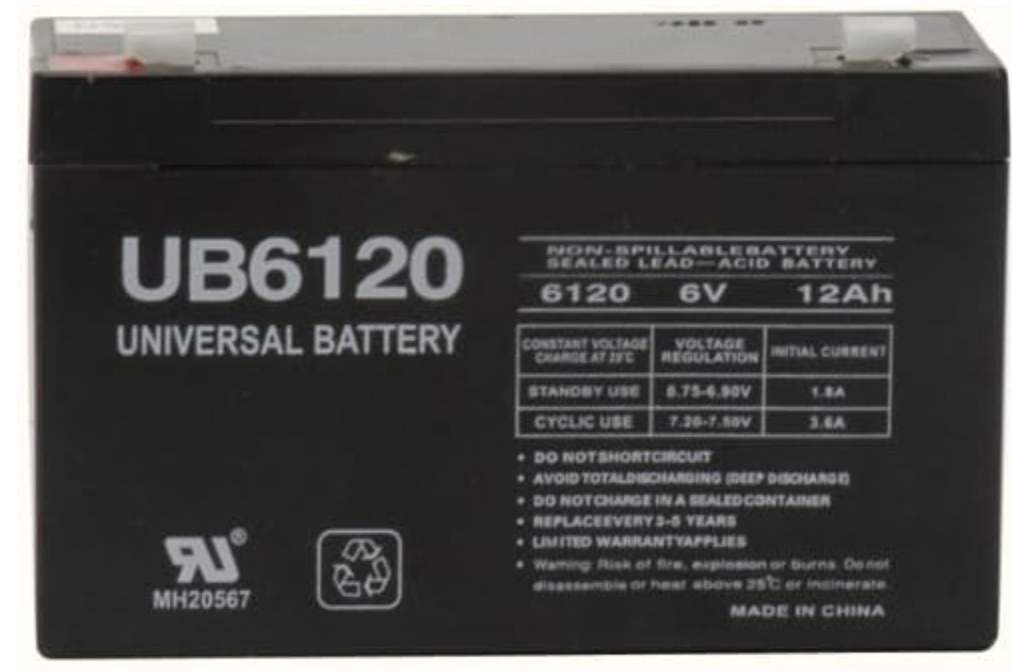
Nickel-Metal Hydride
The nickel metal hydride batteries fall in the middle of the battery lineup. While they are better than lead batteries, they are below the level of Li-ion. Nickel-metal hydride batteries are lighter than lead batteries shelling out more energy density.
But they lack sufficient propulsion power, compared to the lighter, more powerful Li-ion batteries. In addition, they discharge and downgrade fast within less than 250 charging cycles. Users have also complained about their low tolerance to temperature fluctuations.
Lithium Manganese Batteries
There are two versions of this battery technology; INR and NMC. Electric Scooter batteries are mainly made using INR technology due to their distinct advantage. Batteries made with this technology are more energy efficient, temperature tolerant, and therefore safe for use.
Safety is especially critical considering some battery types have been known to overheat and even explode. Additionally, they are inexpensive, powerful, and can store charge for a long time.
What About Battery Brands?
We know most battery manufacturers produce the battery versions we’ve highlighted above. However, different brands have varied methods and secret ‘sauce’ in producing their batteries. Consequently, this is reflected in the quality.
On the lower end of the spectrum are the generic brands sourced from some countries like China. Of course, the quality of such batteries is not guaranteed. Sadly, they will find their way on some scooter brands whose manufacturers are looking to skimp on cost. They are neither efficient nor long-lasting and they translate to low performance. But ultimately, as a buyer, you get what you paid for.
On the other spectrum are products from renowned battery makers. They have international certification marks of quality from reputable governing bodies. Examples include LG, Dynavolt, Panasonic, and Samsung.
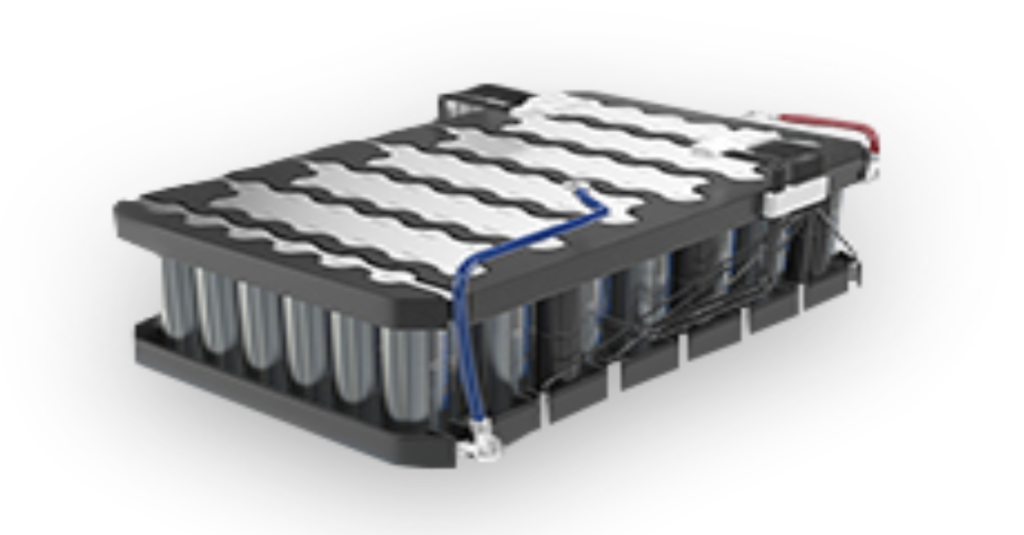
Photo: Samsung 48v,9Ah scooter battery
While they are pricey, they are worth every penny considering their durability. Some of the batteries can deliver over 500 charge cycles spanning over 5 years.
What About Battery Packs?
For the most part, scooter batteries are designed with strapped-up single cells. Indicated as 18650 or 21700 these numbers connotes the size and capacity of the batteries. The 18650 batteries are smaller in size than the 2170 ones. The same goes for their power output. The 21700 batteries provide more power for better torque and speeds.
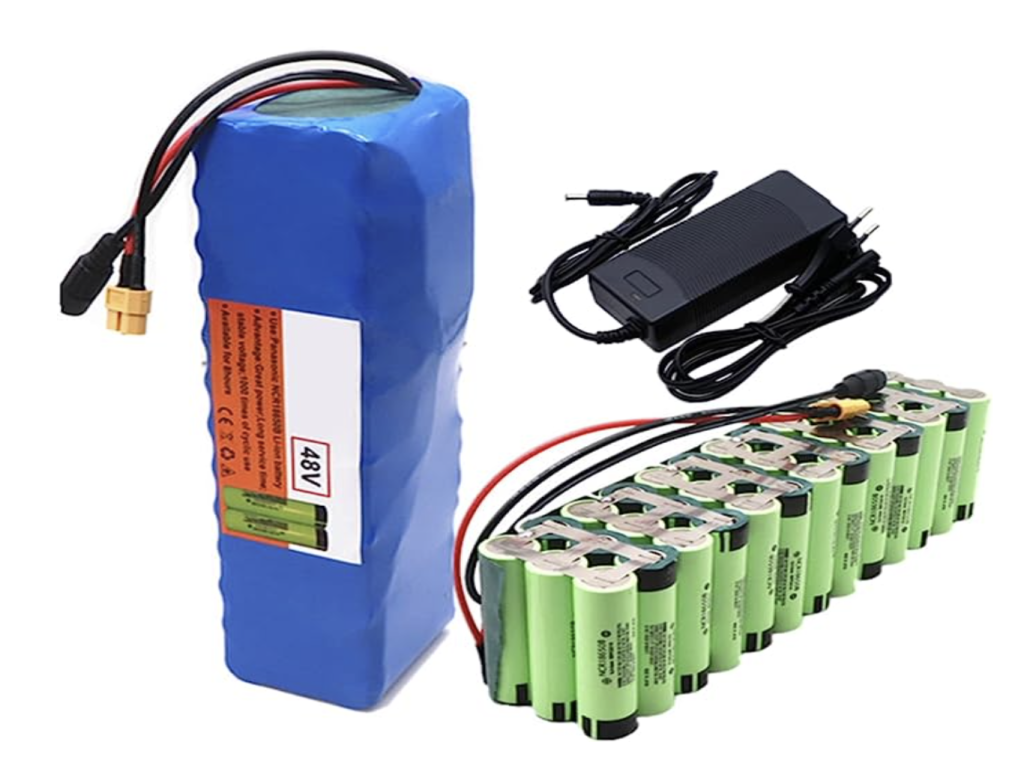
Interchangeable Batteries
Not all scooter batteries are wired into the frame. Some come with replaceable li-ion batteries. That means you can swap them on the fly, without going through the trouble of disentangling cables or unscrewing covers.
That means you can double your range, and forgo the need for recharging mid-journey. Plus, they are usually lightweight and easy to carry. Best scooters examples with interchangeable batteries include Turbo X7 Pro, turbo and V8, and AnyHill-UM2
How to Increase Battery Life for Better Scooter Performance
Keeping the battery in tip-top condition is key to the optimum performance of your vehicle. The most important thing is to follow battery maintenance best practices, to avoid unduly shortening its useful life. Here are a few things to do.
Avoid Completely Depleting the Charge
Continually draining your battery can kill your battery fast. A good practice is to maintain a minimum recharging level. Keeping it within 10%-30% will keep the battery chemistry in the right balance and reduce wear.
Possibly, have a good schedule of charging that aligns with your usage. For example, you can commit to charging it every evening after completing your trips. That way, you can have it fully charged the following morning.
Avoid Prolonged Charging
Just draining the charge, prolonged charging is also bad for your battery. Overcharging risks a thermal runaway reaction which deteriorates the batteries. The reaction is so risky, it can cause an explosion. Be sure to switch off and unplug it immediately after it is fully charged.
Avoid First Changing Methods
While appearing convenient, fast charging may not be best for the life of your scooter battery. Fast charging generates heat that degrades the battery over time. Instead, use standard chargers or models recommended by the battery manufacturers. We know some manufacturers might provide fast chargers, but that is because they align with their specifications.

Charge It Fully Before Storing
If you are going on a vacation, or for whatever reason you decide to store your scooter, ensure the battery is fully charged. This is to reduce the natural battery discharge that is inevitable with a stored battery. Also, ensure to check the battery charge level regularly, and recharge appropriately to maintain its health.
Consider the Battery Capacity and Range
Most batteries have all these metrics indicated on the user manual or its cover. Read the voltage, and power capacity, and calculate its range as well if not indicated. That way, you can be able to plan the distance of the trip accordingly. Also, consider the speeds and the loads. Batteries drain faster when you load, or ride the electric scooter at a higher speed.
Maintain the Ideal Temperature Requirements
Like most electronic gadgets, keeping track of the temperature is essential for the battery’s maximum performance. Too low, or too high temperatures disrupt the chemical processes that can spoil it.
According to research, the recommended temperature ranges from 0-45 degrees centigrade. Anything above or below this, will degrade the battery and impede the performance of your electric scooter.

Other batteries aspects to consider for maximum scooter performance
There is a lot to learn about battery performance and how it impacts speeds and power. Here are some more tidbits on how to keep your battery, and by extension the scooter at its peak performance.
Battery Management System
One of the downsides of the Lithium-ion battery is the tendency to overheat risking explosion. To help mitigate this problem battery manufacturers have designed a device to manage them. The Battery Management System is connected to the battery system which controls overcharging, or undercharging.

Voltage Sag
Voltage sag is normal for batteries to experience a sudden drop in power, also known as voltage sag. This can be caused by several reasons, including sudden weight load, or electric flow disruption. For example, voltage sag can happen when riding on a rough road or hilly terrain. However, the charge is restored when the strain on the battery is eased off.
C-rate
This is another technical term you might see bandied around by technicians or salesmen. However, it is nothing fancy. It simply means a battery charge rate. C-rate is an indicator of how fast the battery soaks in the charge or drains it. Understanding it will help you keep the battery and your scooter in peak condition.
Frequently Asked Questions
How Much Do Electric Scooter Batteries Cost?
The average cost falls between $100 to $350. Generally, the original brand batteries cost more than the generic unbranded ones. But this also depends on the battery specifications. Some of the renowned brands in the market include LG, Samsung, and Dynavolt.
How Long Do Electric Scooter Batteries Last?
An average Li-ion battery can work perfectly between 300 to 500 charge cycles for high-quality branded batteries translating to three years of travel time. But if well maintained they can push beyond the three years, to even four years.
Are Electric Scooter Batteries Waterproof?
Some electric scooter batteries may be indicated as water-resistant. However, take this indication with caution. Just like most electric devices, water resistance is not a guarantee of waterproofness. So to be on the safe side avoid riding in the rain on plunging into water puddles.
Final Thoughts
Batteries are the powerbases from which electric scooter motors draw their power. As such, it is important to learn how they work, their different types, maintenance processes, etc. That is how you can keep your battery healthy. Not only that but by following the tips in this article, you will improve the performance of your electric scooter as well.




